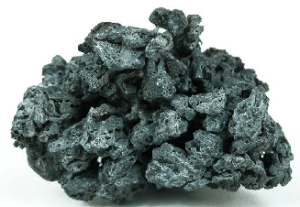Lead

Lead – ‚to be enjoyed‘ with caution
In normal everyday life today – fortunately – we no longer come across lead-containing products too often. Until the 1970s, lead was still used to produce drinking water pipes. It was used for paints (lead white) and ceramic glazes. In earlier centuries, lead was also found in tableware and so-called lead sugar was even used for sweetening, especially wine.
Lead or lead compounds are still used in many technical applications today. The best-known example is the so-called lead accumulator as a starter battery in vehicles. Since lead and lead compounds have led to health hazards up to the present, industry is trying to replace lead as far as possible, even where the health hazards are low.
In doing so, it also responds to legal regulations, especially through regulations at the European level. In the 1990s, for example, lead in petrol (in the compound lead tetraethyl) was banned as an anti-knock agent. Very recent is the restriction of the use of lead in the automotive sector through the End-of-Life Vehicles Regulation. In Luxembourg, too, lead balance weights may no longer be used since July 2005.
Panic is not appropriate when in contact with lead, but with a single intake of lead or lead salts, there is hardly any toxic effect to be noticed. Contact with metallic lead is generally harmless. Lead poisoning – the famous composer Ludwig van Beethoven fell victim to such – occurs only with regular recording. Caution is recommended here especially with lead compounds or dust, which are absorbed by the lungs.
Lead or lead-containing products do not belong in the residual waste under any circumstances. This also applies to very small quantities of metallic lead. Contact the SDK if you have any questions about disposal.
For further tips and advice, please contact SDK on tel. 488 216 1.

Lead
Lead – ‚to be enjoyed‘ with caution
In normal everyday life today – fortunately – we no longer come across lead-containing products too often. Until the 1970s, lead was still used to produce drinking water pipes. It was used for paints (lead white) and ceramic glazes. In earlier centuries, lead was also found in tableware and so-called lead sugar was even used for sweetening, especially wine.
Lead or lead compounds are still used in many technical applications today. The best-known example is the so-called lead accumulator as a starter battery in vehicles. Since lead and lead compounds have led to health hazards up to the present, industry is trying to replace lead as far as possible, even where the health hazards are low.
In doing so, it also responds to legal regulations, especially through regulations at the European level. In the 1990s, for example, lead in petrol (in the compound lead tetraethyl) was banned as an anti-knock agent. Very recent is the restriction of the use of lead in the automotive sector through the End-of-Life Vehicles Regulation. In Luxembourg, too, lead balance weights may no longer be used since July 2005.
Panic is not appropriate when in contact with lead, but with a single intake of lead or lead salts, there is hardly any toxic effect to be noticed. Contact with metallic lead is generally harmless. Lead poisoning – the famous composer Ludwig van Beethoven fell victim to such – occurs only with regular recording. Caution is recommended here especially with lead compounds or dust, which are absorbed by the lungs.
Lead or lead-containing products do not belong in the residual waste under any circumstances. This also applies to very small quantities of metallic lead. Contact the SDK if you have any questions about disposal.
For further tips and advice, please contact SDK on tel. 488 216 1.






